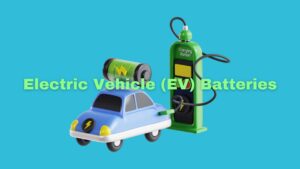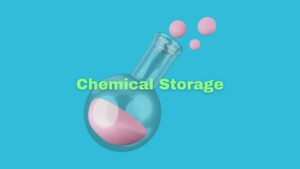1. Pharmaceuticals and Vaccines
Pharmaceuticals and vaccines are highly sensitive to temperature and humidity swings, making precise control essential. While pills and syrups require proper storage, injectable products like blood plasma, insulin, and vaccines demand stricter conditions. Small deviations can reduce their effectiveness or compromise safety, posing health risks when administered.
These days, there are smart systems available that monitor temperature and humidity in real time, especially useful in places like labs. If something goes wrong, they can trigger alarms and send instant WhatsApp notifications to the right people. It’s a great way to ensure everything stays under control without constantly keeping an eye on the system.
During the COVID-19 pandemic, different vaccines had specific storage requirements. For example, Pfizer-BioNTech’s vaccine needed ultra-cold storage at -70°C to remain effective. This demonstrates how maintaining exact environmental conditions is crucial in the pharmaceutical industry to ensure product efficacy and safety. Proper storage solutions are vital for safeguarding these life-saving products from damage.
2. Food and Beverage
The food industry relies heavily on precise temperature and humidity control to ensure both safety and quality. From large hotels and restaurants to food manufacturers and wholesale markets, accurate environmental monitoring is critical—especially for fresh produce, meat, seafood, and dairy products. Any deviation from the ideal conditions can lead to spoilage, resulting in financial losses and potential health risks.
Real-time monitoring is essential in preventing these issues. By tracking storage conditions continuously, businesses can detect any irregularities and take immediate action. These systems closely monitor temperature and humidity, ensuring that conditions remain just right. Whether it’s preserving the quality of wine or preventing waste in food storage, these solutions help businesses maintain top-tier product standards and effortlessly comply with industry regulations
3. Electric Vehicle (EV) Batteries
As electric vehicles (EVs) have surged in popularity, proper storage of their high-capacity batteries, both before installation and after removal, has become increasingly important. These batteries, due to their large energy capacities, can pose significant risks such as fire hazards or chemical leaks if not stored correctly. To prevent these dangers, EV batteries must be kept within specific temperature and humidity ranges to ensure safety and performance.
For instance, batteries awaiting installation should be stored at controlled temperatures to prevent degradation, while used batteries, which are even more sensitive, require more stringent conditions. Regulations and manufacturer guidelines often mandate that used batteries be stored in monitored facilities with temperatures ranging between 5°C and 20°C. This helps extend battery lifespan, reduce the risk of accidents, and maintain their efficiency.
At Sensgreen, we worked with Doğuş Oto on a project that exemplifies these best practices in EV battery storage, ensuring optimal environmental conditions for long-term performance and safety.
4. Data Centers
Maintaining constant humidity and temperature in data centers is crucial for preventing hardware damage and ensuring peak performance. Elevated temperatures have the potential to overheat servers, resulting in equipment malfunction, while high humidity levels may cause condensation, endangering delicate electronic parts. Big businesses frequently use sophisticated monitoring systems that detect temperature and humidity in real-time to reduce these dangers.
To preserve the longevity and performance of data systems, data centers should ideally be kept within a preset range of environmental parameters. Generally, it is necessary to keep the temperature between 18 and 27°C, the dew point between 5 and 15°C, and the humidity no more than 60%. Big IT companies like Google and Amazon, for instance, use automatic cooling systems that make adjustments based on real-time data to maintain optimal conditions throughout their enormous data centers.
5. Chemical Storage
To guarantee material integrity and safety, careful temperature and humidity management are essential while storing chemicals. Specific conditions are needed for each chemical, and any departure may cause serious dangers.
When handling extremely sensitive and hazardous products, such as chemicals, even quick alarms might not be sufficient to prevent problems. In these situations, a fully automated system that uses real-time temperature and humidity data to set off automation scenarios is essential. These circumstances can be made to operate HVAC or other comparable systems, guaranteeing quick alterations to keep things safe without depending entirely on human participation.
For example, to keep metal containers from corroding, hydrochloric acid must be maintained in low-humidity conditions. Similarly, substances such as toluene, benzene, and organic peroxides can become extremely volatile at high temperatures, increasing the risk of fire or explosions. These illustrations highlight the necessity of accurate environmental monitoring in chemical storage facilities in order to avert dangerous situations and uphold safety rules. Stable and secure storage conditions depend on dependable monitoring systems.
6. Archives and Museums
Monitoring humidity and temperature is crucial for the preservation of priceless items and papers in a variety of settings, including museums and archives. Numerous objects, including old furniture, paintings, and historical texts, are extremely vulnerable to changes in the surrounding environment.
Low humidity can result in brittleness and cracking, whereas excessive humidity can lead to mold growth, cracking, or degradation of materials. For example, it’s usually advised to keep steady temperatures and a relative humidity of 45–55% to avoid damaging fragile collections. The long-term preservation of cultural heritage is ensured by appropriate climate control, shielding these priceless artifacts from irreversible damage.
Sensgreen’s Method for Monitoring and Managing Temperature and Humidity
A variety of temperature and humidity sensors that can function in extreme circumstances are supported by Sensgreen. These gadgets make safe and efficient solutions possible for a range of sectors. Sensgreen Smart Building Platform provides a number of important functions.
- Real-time data display: Enables prompt decision-making and monitoring by giving instant access to the current humidity and temperature levels.
- Customizable Alarms: Facilitates the setting up of warnings for unwanted circumstances, assisting in the prevention of possible problems before they become more serious.
- Automated HVAC Control: This feature works in conjunction with HVAC systems to automatically modify settings in response to real-time data, guaranteeing ideal environmental circumstances.
- Regulatory Compliance Reporting: Assists in the verification of compliance by producing periodic reports that show conformance to industry norms and standards.
All of these characteristics work together to guarantee that Sensgreen provides complete and practical solutions for upholding environmental management and fulfilling industrial standards.








